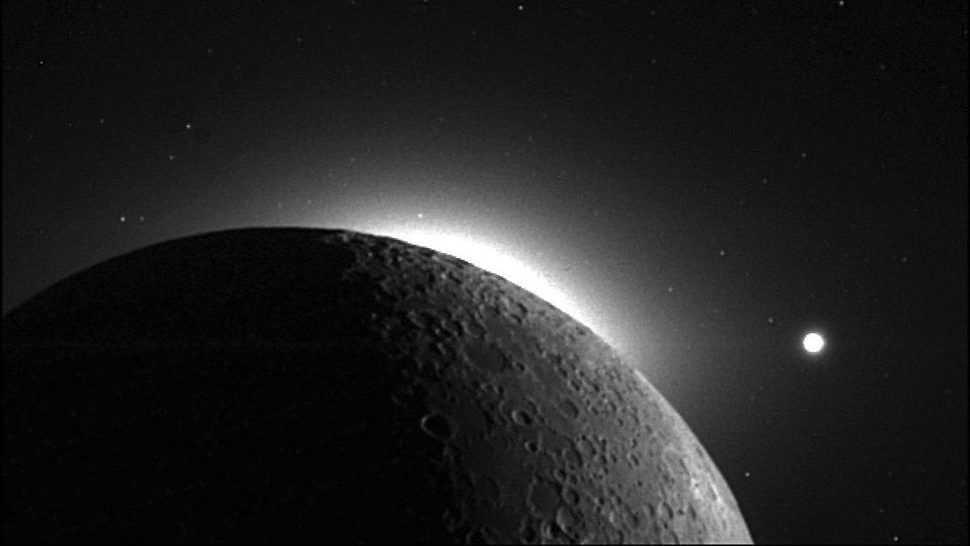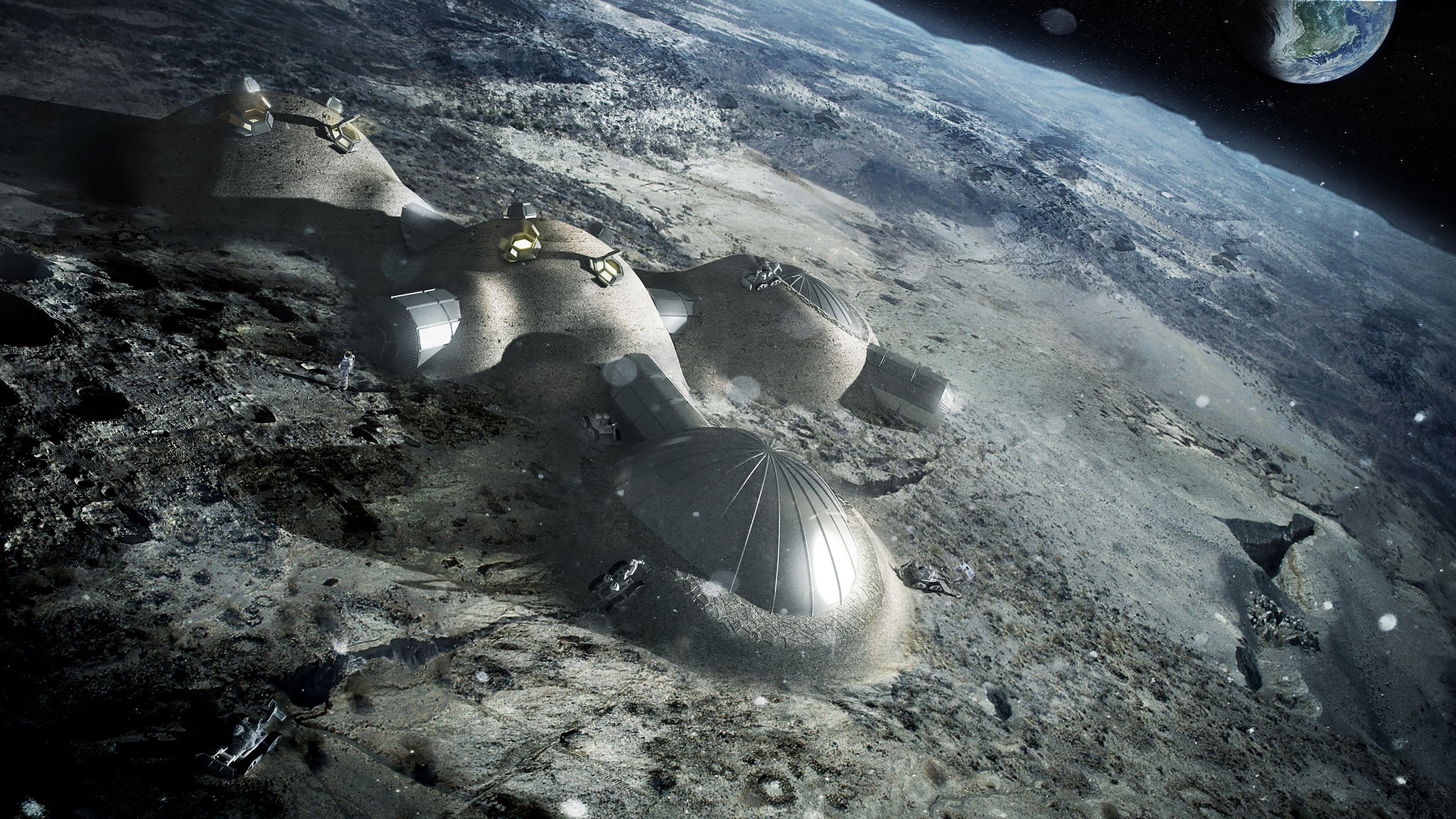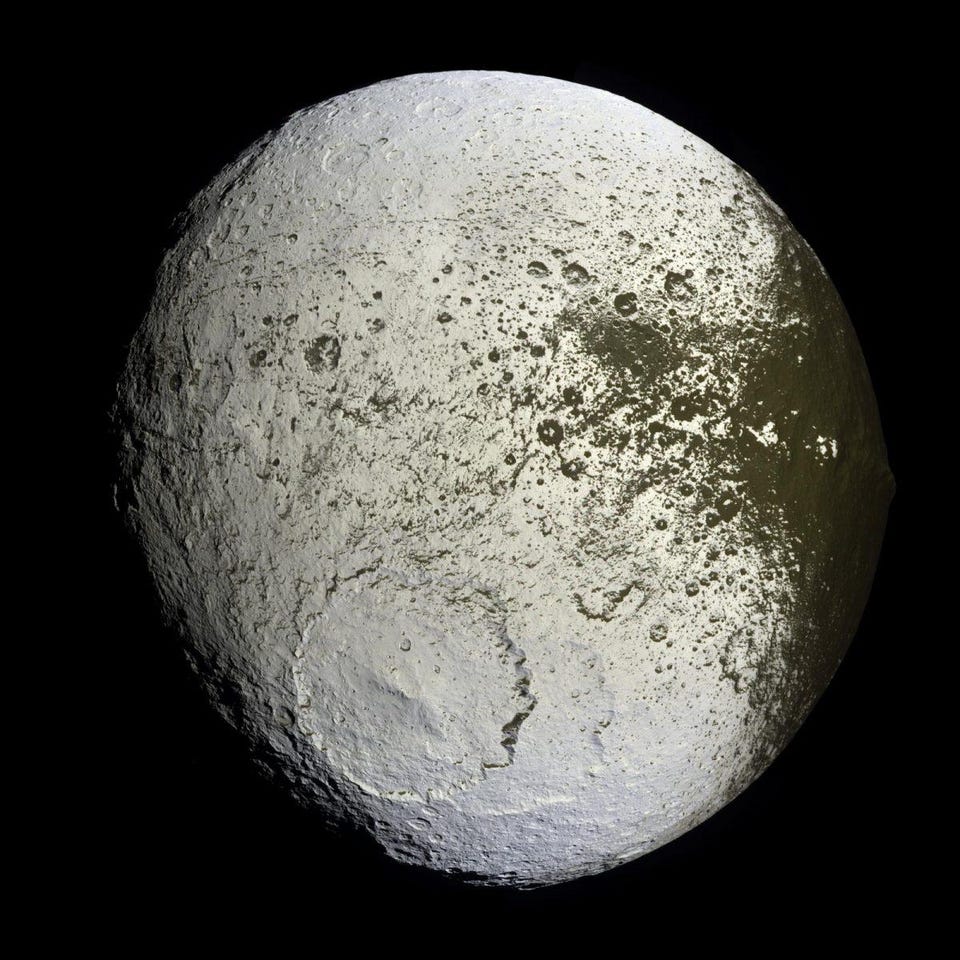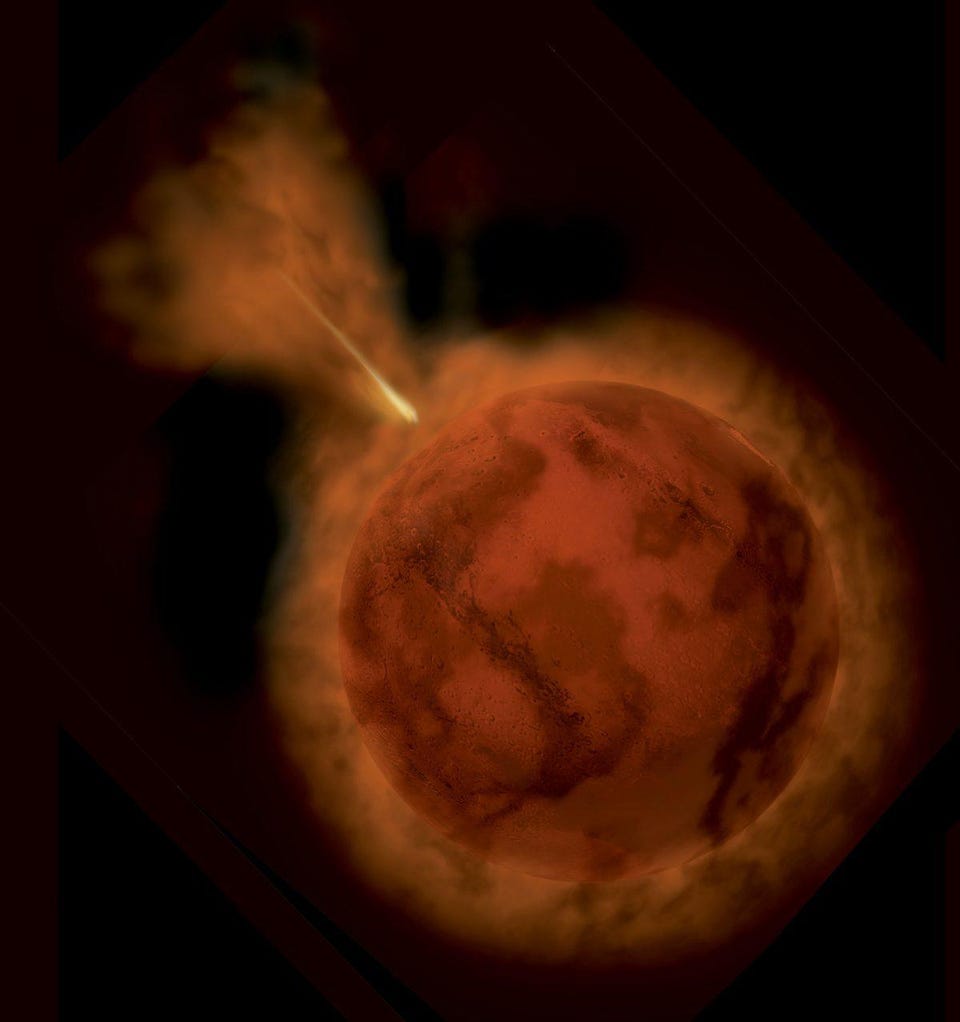Why the Moon’s two faces are so different
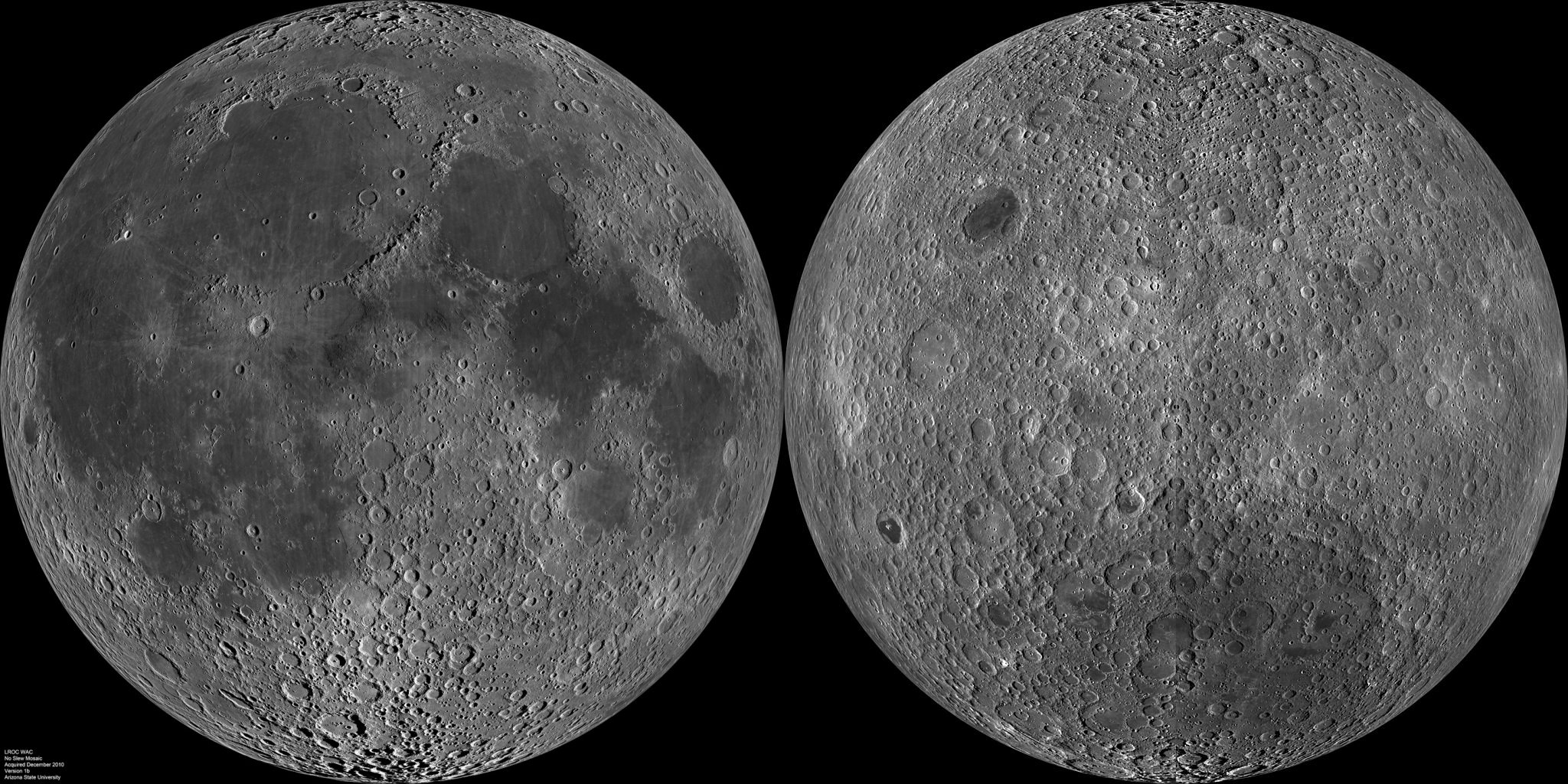
- The near side of the Moon has faced Earth for practically all of the last 4.5 billion years. Earth’s inhabitants have gazed upon its iconic mountains, craters, and dark maria (basins) for all of history.
- But in 1959, humanity finally flew a spacecraft around the Moon to the opposite side, the far side of the Moon, and saw a face that was entirely different, and virtually unrecognizeable.
- For more than half a century, we’ve puzzled as to why these two sides of the same planetary body were so different. Thanks to the physics of early Earth, we might finally have the answer.
The Moon, by far, is the brightest object and largest object that’s visible to human eyes in Earth’s night sky. Compared to Venus, the next brightest object that appears, the Moon is thirty times the diameter, takes up almost 1000 times the surface area, and appears about 1,000,000 times brighter than Venus. Moreover, the Moon doesn’t appear as a uniform disk to us, but rather shows incredible differences from place-to-place across the surface, even as viewed from our limited perspective here on Earth.
To the naked eye, these differences might just appear as bright-and-dark patches: the so-called “man in the Moon” is the easiest feature to see. But if you take a look through a telescope, you won’t just see those dark spots silhouetted against the brighter portions, but also mountain ridges, craters with high walls and rays splaying out from them, and shadowy relief along the night-day boundary, known as the Moon’s terminator.
Although these features might be familiar, they all hold clues to the Moon’s ancient history, and can help us understand why the “face” of the Moon that we see isn’t the only perspective that matters.
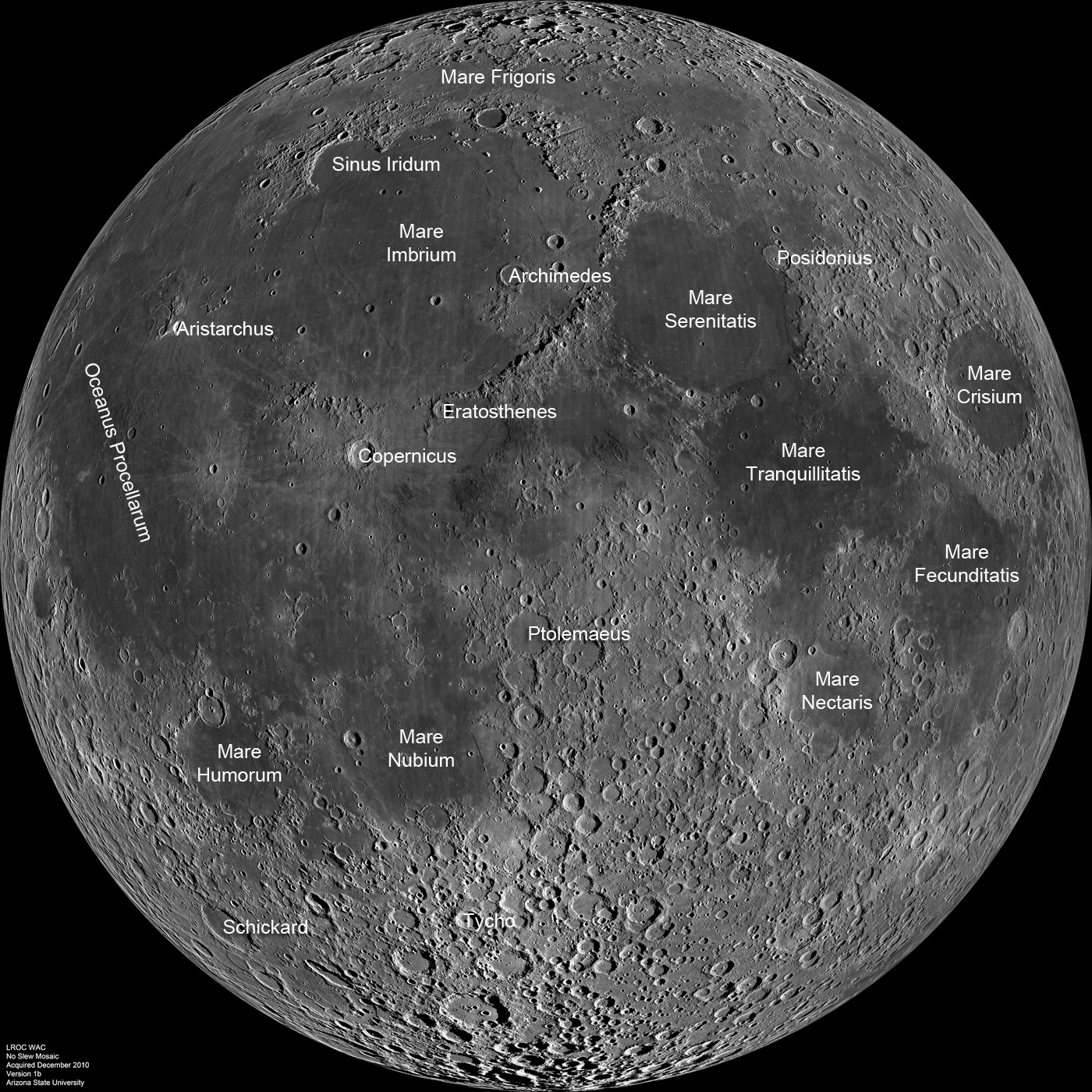
With even an off-the-shelf pair of binoculars or the cheapest telescope you can find, there are two main features about the Moon that you can’t miss:
- That it’s heavily cratered, and that the lighter-colored areas are generally more heavily cratered than the darker areas. Many cratered regions include small craters inside medium-sized craters inside giant craters, which provides evidence that the larger craters are so old that newer, smaller ones formed atop them.
- That it has these dark areas known as maria (Latin for “seas”), which have relatively few and mostly smaller craters in them. These regions are notable for being a significantly different color and composition than the majority of the Moon.
It’s true that the same side of the Moon always faces us, but different portions of the lunar hemisphere get illuminated throughout the month, dependent on the relative positions of the Earth, Moon and Sun.
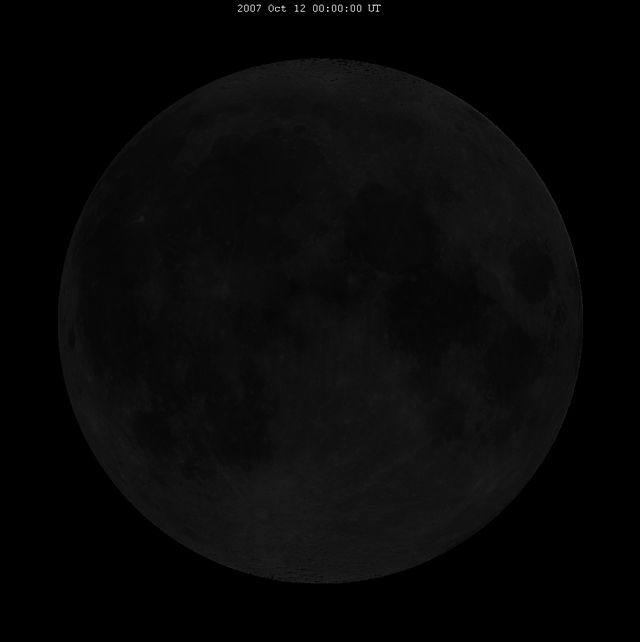
In addition, because the Moon’s orbit is elliptical, moving faster when it’s closest to Earth and slower when it’s farthest away, the face of the Moon that’s visible changes ever-so-slightly, a phenomenon known as lunar libration. Even though this means, over the course of many months, we could see up to a total of 59% of the Moon, it wasn’t until 63 years ago, when the Soviet spacecraft Luna 3 swung around to the far side of the Moon, that we got our first pictures of the far side of the Moon.
Although it wasn’t very impressive in terms of image quality, it was remarkable for an unexpected reason: the near side of the Moon appears vastly different, in terms of both cratered features and maria features, from the far side that always faces away from us. This discovery came as quite a shock, and for decades, even as our imaging and understanding of this elusive side of our nearest planetary neighbor improved in quality, we lacked an explanation as to why this difference existed at all.

So, what are the big differences between the near side and the far side?
One thing you’ll notice right away is the almost complete absence of the dark maria on the far side. There’s one prominent one on the Moon’s northern hemisphere, but it’s small. There are perhaps a few smaller, shallower, connected ones in the southern hemisphere, but none of them are as wide, deep, or sweeping as any of the ones on the Moon’s near side. The maria are vastly different between the near side and the far side.
Perhaps the second thing you’ll see is how much more prominently and thoroughly cratered the far side is. With so much more surface area that is devoid of these maria, there are more regions that appear to be older and more heavily cratered. That leads to more craters with rays appearing to radiate out from them, even crossing one another on the far side.
Although this was first discovered all the way back in 1959, it took a lot longer to come up with a reason for this mystery. You see, there’s an obvious explanation — that perhaps you even thought of yourself — but it turns out to be wrong.
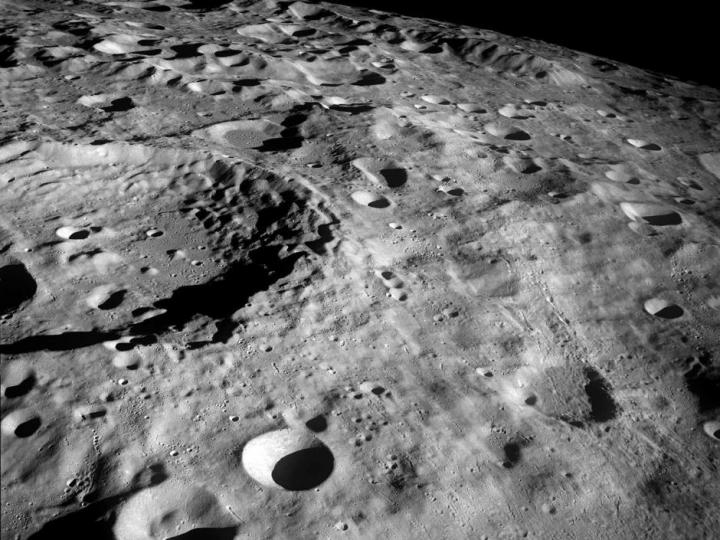
Our experience tells us that the Solar System is full of hazardous comets and asteroids, periodically plunging into the inner reaches of our star’s vicinity. When things go well for the inner worlds, these bodies produce spectacular displays like cometary tails and meteor showers. But when things go poorly, one of those large bodies smacks into a larger one, creating a catastrophic impact and, if there’s life on the world that gets struck, a potential extinction event.
The “obvious” explanation would be that when these massive space rocks head toward the Moon from the far side, there’s nothing at all getting in the way, and every object that would strike it absolutely does. But when you approach the Moon from the near side, the Earth is in the way, and that we can act as a shield for objects that would otherwise impact the Moon’s near side. In doing so, the Earth could either absorb those impacts or gravitationally deflect those potential impactors away from the Moon.
That’s the obvious explanation.

But when we look at the details of the Earth-Moon system, does this explanation hold any water?
It’s a nice attempt at making sense of what we see, but the fact that the Earth-Moon distance is some forty times larger than the diameter of the Earth means that the difference in the number of impacts on the near side of the Moon from the far side ought to be less than 1% when we run the numbers. And that’s simply not the case; the far side is something like ~30% more heavily cratered than the near side, a tremendous difference that cannot be quantitatively explained by this gravitational deflection effect.
Additionally, this explanation offers no differences for the abundance and size of the maria that appear on the near side versus the far side. Impacts aren’t thought to cause these; they’re the result of basaltic lava flows. The fact that Earth offers a small amount of planetary protection to the Moon’s near side simply can’t account for that feature.
So what does account for the differences between the near side and the far side? The answer, it turns out, does have something to do with space collisions, but not from comets and asteroids.
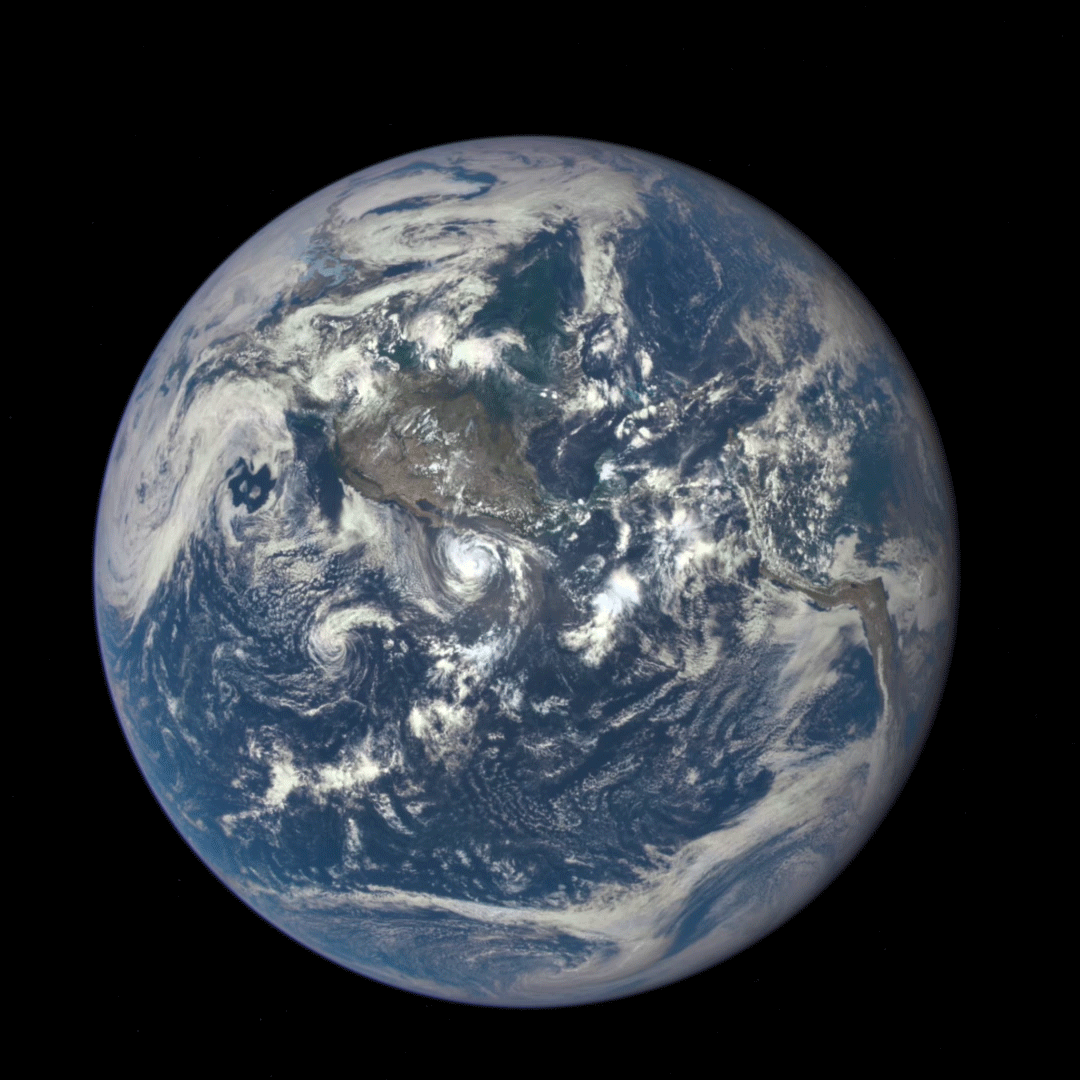
Compared to everything our planet has experienced over the past 65 million years, the asteroid that wiped out the dinosaurs was a big one. It was roughly 5-to-10 km across, or the size of a very large mountain. But if we go back some 4.55 billion years in history, we’d learn that the Chicxulub impactor was absolutely not the largest collision in Earth’s history, not by a long shot.
We didn’t even realize this until we brought rocks back from the Moon, and discovered that they’re made of exactly the same stuff as Earth is made out of! This was a big surprise, because no other moon/planet companions in the Solar System — not Jupiter and its moons, not Mars and its moons, not Saturn and its moons — are like that. Why would this be the case?
Some 4.5 billion years ago, when the Solar System was still in its infancy, the Earth was mostly formed, and was around 90-95% of its present mass. But there was another very large, Mars-sized planetoid that was in an almost identical orbit to Earth’s. For tens of millions of years, these two objects unstably danced away from and toward one another. And then, finally, about 50 million years after the Solar System formed, they collided with one another!

The vast majority of both proto-planets wound up forming the Earth, while a large amount of debris was kicked up into space. Over time, a significant amount this debris coalesced gravitationally to form the Moon, while the rest of it either fell back to Earth or escaped to elsewhere in the Solar System. As crazy as it sounded when it was proposed in the 1970s, this has come to be the accepted theory — verified by many observable phenomena that match the predictions — over the past 40 years. Additionally, there’s now evidence that the moons around other rocky worlds, like Mars and Pluto, likely formed from giant impacts as well.
This collision must have happened very early in the Solar System’s history, and the Earth was still very hot when it happened: around 2,700 Kelvin! The Moon that formed, initially, formed from a disk of debris that would have been exposed to the very hot Earth as it was forming. There are a few details we’re pretty confident in:
- the Moon was likely located much closer to us, initially,
- it likely became tidally locked after a very short time, ~100,000 years or less,
- and may have even been born tidally locked, having lost its excess spin angular momentum even prior to its completed formation.
That last detail is not presently known, but remains a strong possibility. If so, there’s a big effect from having that extra heat source (the Earth) close by in terms of what materials are available to the Moon on both the Earth-facing and the away-from-Earth sides as it’s forming.
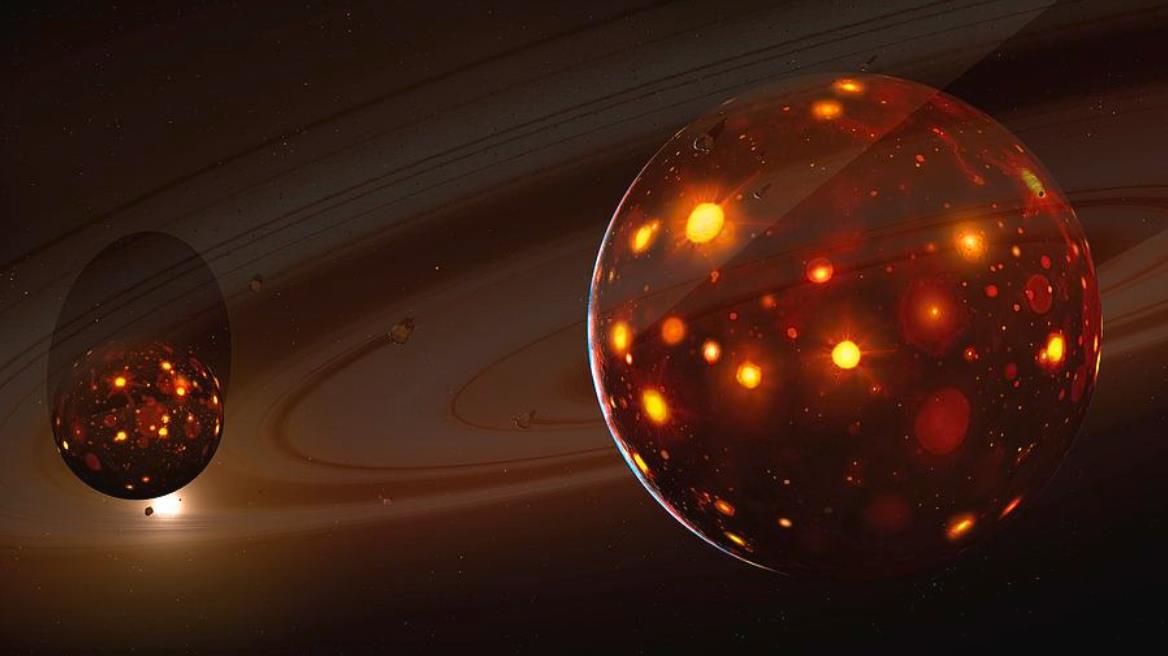
It was only in 2014, a whopping 55 years after we first glimpsed the far side of the Moon, that a study by Arpita Roy, Jason Wright and Steinn Sigurdsson appeared to have synthesized this complete story and presented the necessary evidence to support it.
What they did was remarkable to demonstrate the power of this explanation. They considered the event that created the early Earth-Moon system and followed the potential paths of its physical evolution. The Moon itself winds up forming from a circumplanetary debris disk that surrounds the Earth. If the Earth is very hot, certain elements will be depleted the closer they are to Earth within this disk: elements such as calcium and aluminum. In other words, the heat emanating off of the early Earth creates a chemical gradient within the disk, leading to a differing composition for the side of the Moon that’s closer to Earth versus the side farther from Earth.
The very strong tidal forces from the Earth, remember that the Earth is very massive compared to the Moon (about 70 times as massive) and that the Moon was closer to Earth in the past, could very easily have resulted in the Moon forming already pre-locked to the Earth. If this is the case, then the greater abundances of calcium and aluminum in the farther part of the circumplanetary disk should lead to a thicker crust for the lunar far side as compared to the near side.
A chemical/compositional gradient to the proto-lunar disk as the Moon is forming, therefore, could be preserved today as a difference between the Moon’s two hemispheres. If the Moon were rotating rapidly, like a BBQ chicken on a rotisserie, this would not be possible, but if the Moon experienced practically instantaneous tidal synchronization with the Earth, it would be all but inevitable.
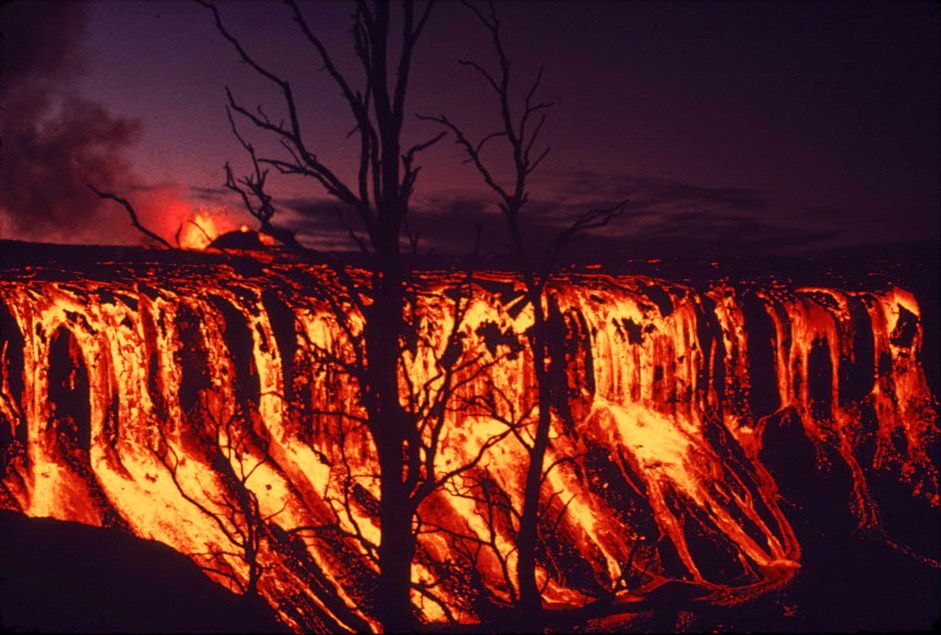
The maria that we see are evidence of lava flows that occurred much later, where molten rock flowed into the great basins and lowlands on the lunar surface. If the near side formed with a thinner crust and a different composition than the far side, that would explain why, even billions of years later, the two faces look so different: with different sizes and numbers of maria on them.
With those dark lunar maria not solidifying until much later in the Solar System’s history, it’s easy to understand why they’re so much less heavily cratered than the lunar highlands that have been solid for so long. When your surface becomes covered in liquid, any pre-existing impacts get erased, like a zamboni resurfacing ice on a skating rink. Similarly, any impacts during this time would simply be absorbed into a sea of molten lava. Just like meteors striking the Earth’s oceans, the ones landing in the Moon’s ancient lava oceans didn’t leave scars!
The study showed that simply by having a hot early Earth near enough to the Moon while it was forming — just by adding that one-sided heat source — it could create the crustal thickness difference as well as elemental and chemical differences between the two sides.
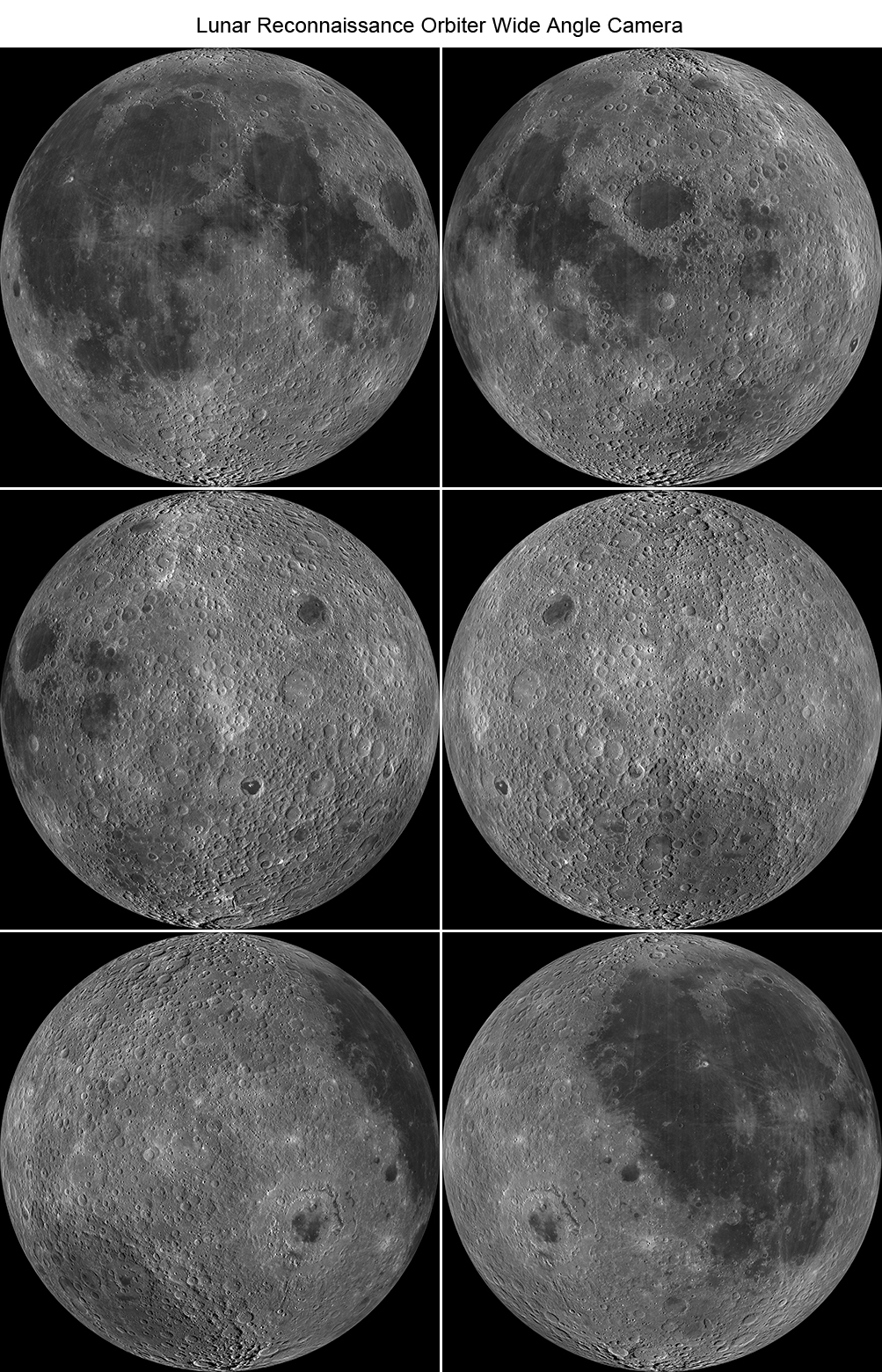
At long last, after more than half a century of pondering the mystery of the Moon’s far side, we can confidently state not only how the Moon formed, but why its two faces are so different! We know that the Moon shines by reflecting the Sun’s light, but who would’ve imagined that it was the young Earth, glowing bright and hot in the Moon’s sky, that would make the two sides so different?
And yet, that’s precisely the explanation that works. No matter how wild or unusual your idea may be, if it has sufficiently strong explanatory power to account for what we observe, it just might be the necessary idea to solve whatever puzzle it is that you’re considering. That’s just part of the wonder and joy of science, and the thrill of finding out the secrets of our reality!

